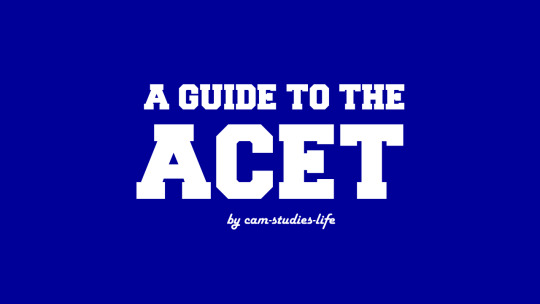#ratio proportion and variation aptitude
Explore tagged Tumblr posts
Text
How to Prepare for Quantitative Aptitude for Banking Exams?
Quantitative Aptitude is a critical section in banking exams like IBPS PO, SBI PO, and other competitive exams, assessing candidates' ability to solve numerical problems, apply mathematical concepts, and think logically under time constraints. To excel in this section, effective preparation is key. Here’s a detailed approach to help you master Quantitative Aptitude for banking exams.
1. Understand the Syllabus and Exam Pattern
Before diving into the preparation, it’s essential to understand the syllabus and the exam pattern. Typically, the Quantitative Aptitude section covers topics such as:
Number System
Simplification and Approximation
Percentage
Profit and Loss
Average
Time and Work
Time, Speed, and Distance
Ratio and Proportion
Simple and Compound Interest
Data Interpretation (DI)
Mensuration
Probability
Number Series
Permutation and Combination Each exam may have slight variations, so go through the official notification and make sure you are clear about what to focus on.
2. Strengthen Basic Concepts
The foundation of Quantitative Aptitude lies in mastering the basics of mathematics. Begin by revising fundamental concepts from class 9 and 10 mathematics, as they form the core of many banking exam topics. Brush up on topics like basic arithmetic operations, fractions, ratios, percentages, and algebra. Understanding these topics well is crucial as they will help you tackle complex problems quickly and accurately.
3. Practice Regularly
Quantitative Aptitude requires consistent practice to develop speed and accuracy. Dedicate time every day to solving problems, starting with simpler questions and gradually moving to more difficult ones. Regular practice will not only improve your problem-solving skills but also help you manage time effectively during the exam. Use question banks, online platforms, and study materials specifically designed for banking exams to access a wide variety of questions.
4. Work on Speed and Accuracy
Time management is vital in the Quantitative Aptitude section. With limited time during the exam, you need to solve questions quickly and accurately. Practice solving problems within a set time frame to improve your speed. Focus on minimizing mistakes, as accuracy is just as important as speed. Set a timer while practicing to simulate exam-like conditions.
5. Master Data Interpretation
Data Interpretation (DI) is a major part of the Quantitative Aptitude section, often involving complex tables, graphs, or charts. Developing a strategy to approach DI questions is essential. Start by practicing basic types of DI such as bar charts, line graphs, pie charts, and tables. Learn to quickly interpret data, perform calculations, and answer questions based on the given data.
6. Use Shortcuts and Tricks
While practicing, make sure to learn shortcuts and tricks that can save time, especially for calculations. Techniques such as approximate values, squaring numbers, and multiplying large numbers using tricks can make solving problems faster. Many competitive exam preparation books and online resources offer such tricks. These methods are essential when you have to solve numerous questions within the given time limit.
7. Take Mock Tests and Analyze
Mock tests are an integral part of your preparation. They simulate the actual exam environment and allow you to evaluate your preparation. Regular mock tests will help you understand the pattern of questions, your strengths and weaknesses, and how to manage time effectively. After each test, thoroughly analyze your performance, identify mistakes, and work on improving those areas.
8. Stay Updated with Current Affairs
While Quantitative Aptitude is based on logical and mathematical principles, many banking exams also include questions related to current events and data analysis. Make it a habit to read newspapers and stay updated with general knowledge, as this will help you in the Data Interpretation and Reasoning sections too.
9. Focus on Revision
As the exam date approaches, make sure to revise all the topics you’ve covered so far. This will help reinforce your concepts, and you’ll be more confident during the exam. Focus on your weak areas and practice more questions in those topics to gain proficiency.
10. Stay Positive and Motivated
Last but not least, maintaining a positive attitude is crucial. Stay focused on your goals, avoid distractions, and keep a steady pace in your preparation. Take care of your health by staying hydrated and taking regular breaks to avoid burnout.
Conclusion
Preparation for Quantitative Aptitude in banking exams demands dedication, regular practice, and a strategic approach. By understanding the syllabus, mastering the basics, practicing regularly, and refining your speed and accuracy, you can significantly improve your performance. Be patient, stay consistent, and with the right preparation, you’ll be well-equipped to crack the Quantitative Aptitude section with ease.
0 notes
Link
Ratio proportion and variation problems with solutions, formulas, Properties with quantitative aptitude shortcuts for all Competitive Exams
#ratio proportion and variation tricks#Ratio Proportion and Variation#ratio proportion and variation formula#ratio proportion and variation aptitude#Ratio and Proportion – Concepts Properties#allmathtricks
0 notes
Text
Super TET Syllabus 2020
Here I will tell you people about super tet Syllabus 2020 As you all have cleared the uptet/ctet exam now for the job you must have to clear the super TET exam, till now only two times a super TET exam has been conducted.
In the first super TET Exam was one-liner question answer was given in the question paper, But in the second exam MCQs were asked and we also hope this time MCQs will be asked. let me introduce you to how many subjects will be asked in the super tet exam 2020
Subjects; Subjects Maximum marks Language – Hindi, English, Sanskrit 40 Mathematics 20 Science 10 Environment and Social Study 10 Teaching Methodology 10 Child Psychologist 10 General Knowledge / Current Affairs 30 Logical Knowledge 05 Information Technology 05 Life Skill / Management and Aptitude 10 Total 150 marks So these are the subjects which you will have to study for the super Tet Preparation.so I will now discuss in detail the syllabus of the subject which will give you the right direction study.
Eligibility For Primary Level Teacher ( 1st-5th Class teacher)
If you are preparing for Primary level exam you must have done D.el.ed/ BTC/b.ed ( now eligible) and primary level TET exam must have clear.
Eligibility For Junior Level Teacher ( 6st-8th Class teacher)
If you are preparing for a Junior level exam you must have done B. Ed and Junior level TET exam must have clear.
Paper 1: For Primary Level
Super TET Exam Sections Number of Questions Total Marks Paper – 1
Child Development, Learning & Pedagogy 30 Questions 30 Marks Language 1 (Hindi) 30 Questions 30 Marks Language 2 (anyone from English, Sanskrit, and Urdu) 30 Questions 30 Marks Mathematics 30 Questions 30 Marks Environmental Studies 30 Questions 30 Marks Total 150 Questions 150 Marks Paper 2: For Junior Level
Super TET Exam Sections Number of Questions Total Marks Paper – 2
Child Development, Learning and Pedagogy 30 Questions 30 Marks Language 1 (Hindi compulsory) 30 Questions 30 Marks Language 2 (choose anyone from English, Sanskrit and Urdu) 30 Questions 30 Marks Mathematics and Science Or
Social Studies and Social Science 60 Questions 60 Marks Total 150 Questions 150 Marks Syllabus With Topic Wise General Hindi: अलंकार, समास, विलोम, पर्यायवाची, रस, संधियां, तद्भव तत्सम, लोकोक्तियाँ, मुहावरे, वाक्यांशों के लिए एक शब्द, अनेकार्थी शब्द वाक्य संशोधन -लिंग, वचन, कारक, काल, वर्तनी, त्रुटि से सम्बंधित
GENERAL ENGLISH : (1) Comprehension. (2) Active Voice and Passive Voice. (3) Parts of Speech. (4) Transformation of Sentences. (5) Direct and Indirect Speech. (6) Punctuation and Spellings. (7) Words Meanings. (8) Vocabulary & usage. (9) Idioms and Phrases. (10) Fill in the Blanks.
General Science:– Questions on General Science will cover general appreciation and understanding of Science including matters of everyday observation and experience, as may be expected of a well-educated person, who has not made a special study of any scientific discipline. Questions will be from Science in Daily use, Speed, Force, Energy, Distance, Light, Sound, Biology, Human Body, Health, Cleanliness & Nutrients, Environment & Natural Resources, Matter & Its states.
Mathematics: This paper will include questions on problems relating to Number Systems, Computation of Whole Numbers, Decimals and Fractions and relationship between Numbers, Fundamental arithmetical operations, Percentages, Ratio and Proportion, Averages, Interest, Profit and Loss, Discount, Area, Average, Ratio, Basic Geometry, Time and Distance, Ratio and Time, Time and Work & Basic Statistics etc.
Environment & Social Study: Structure of Earth, Rivers, Mountains, Continents, Ocean & creatures, Natural Resources, Lattitude & Longitude, Solar System, Indian Geography, Indian Freedom Movement, Indian Social Reformers, Indian Constitution, Our Administration, Traffic & Road Safety, Economics, Our Cultural Heritage, Environmental Protection, Natural Disaster Management.
Teaching Skills: Method of Teaching & Skills, Principal of teaching & learning, Present Indian Society & Elementary Education, inclusive education, New Efforts for Elementary Education, Educational Evaluation & Measurement, Early Reading Skills, Educational Management & Administration.
Child Psychology: Individual Variation, Factors to influence Child Growth, Identification of Learning Ability, Creation of Educational Environment, Principal of Learning & Usefulness in Class Teaching, Special Arrangements for Handicapped Candidates.
General Knowledge & Current Affairs: Important National & International Current Affairs, Important Current Affairs of Uttar Pradesh, Place, Personalities, Books, National & International Sports Awards, Indian Culture & Art, etc.
Reasoning: It would include questions of non-verbal type. The test will include questions on similarities and differences, space visualization, problem-solving, analysis, judgment, decision making, visual memory, discriminating observation, relationship concepts, figure classification, arithmetical number series, non-verbal series, etc. The test will also include questions designed to test the candidate‘s abilities to deal with abstract ideas and symbols and their relationship, arithmetical computation, and other analytical functions.
Information Technology: Teaching Skill Development, IT in Class Teaching & School Management, Computer, Internet, Smartphone, Open Education Resource, Important Apps for Teaching, Information of Use of Digital Education Material.
Life Skills/ Management & Attitude: Business Practices and Policy, Motivation, Importance of Teacher (Feature Provider, Observant, Leadership, Path Provider, Consultant), Constitutional & Human Value, Effective Use of Punishment & Reward Arrangement.
1 note
·
View note
Text
SSC CGL Syllabus 2021-22| Exam Pattern For Tier I, II,III,IV
Tier I Syllabus:
Tier-I: General Intelligence & Reasoning:
It would include questions of both verbal and non-verbal type. This component may include questions on analogies, similarities and differences, space visualization, spatial orientation, problem solving, analysis, judgment, decision making, visual memory, discrimination, observation, relationship concepts, arithmetical reasoning and figural classification, arithmetic number series, non-verbal series, coding and decoding, statement conclusion, syllogistic reasoning etc. The topics are, Semantic Analogy, Symbolic/ Number Analogy, Figural Analogy, Semantic Classification, Symbolic/ Number Classification, Figural Classification, Semantic Series, Number Series, Figural Series, Problem Solving, Word Building, Coding & de-coding, Numerical Operations, symbolic Operations, Trends, Space Orientation, Space Visualization, Venn Diagrams, Drawing inferences, Punched hole/ pattern- folding & un-folding, Figural Pattern- folding and completion, Indexing, Address matching, Date & city matching, Classification of centre codes/roll numbers, Small & Capital letters/ numbers coding, decoding and classification, Embedded Figures, Critical thinking, Emotional Intelligence, Social Intelligence, Other sub-topics, if any.
General Awareness:
Questions in this component will be aimed at testing the candidates‟ general awareness of the environment around him and its application to society. Questions will also be designed to test knowledge of current events and of such matters of every day observations and experience in their scientific aspect as may be expected of any educated person. The test will also include questions relating to India and its neighbouring countries especially pertaining History, Culture, Geography, Economic Scene, General Policy & Scientific Research.
Quantitative Aptitude:
The questions will be designed to test the ability of appropriate use of numbers and number sense of the candidate. The scope of the test will be computation of whole numbers, decimals, fractions and relationships between numbers, Percentage. Ratio & Proportion, Square roots, Averages, Interest, Profit and Loss, Discount, Partnership Business, Mixture and Alligation, Time and distance, Time & Work, Basic algebraic identities of School Algebra & Elementary surds, Graphs of Linear Equations, Triangle and its various kinds of centres, Congruence and similarity of triangles, Circle and its chords, tangents, angles subtended by chords of a circle, common tangents to two or more circles, Triangle, Quadrilaterals, Regular Polygons, Circle, Right Prism, Right Circular Cone, Right Circular Cylinder, Sphere, Hemispheres, Rectangular Parallelepiped, Regular Right Pyramid with triangular or square base, Trigonometric ratio, Degree and Radian Measures, Standard Identities, Complementary angles, Heights and Distances, Histogram, Frequency polygon, Bar diagram & Pie chart.
English Comprehension:
Candidates‟ ability to understand correct English, his/ her basic comprehension and writing ability, etc. would be tested.
Tier II Syllabus:
Paper-I (Quantitative Abilities):
The questions will be designed to test the ability of appropriate use of numbers and number sense of the candidate. The scope of the test will be the computation of whole numbers, decimals, fractions and relationships between numbers, Percentage, Ratio & Proportion, Square roots, Averages, Interest, Profit and Loss, Discount, Partnership Business, Mixture and Alligation, Time and distance, Time & Work, Basic algebraic identities of School Algebra & Elementary surds, Graphs of Linear Equations, Triangle and its various kinds of centres, Congruence and similarity of triangles, Circle and its chords, tangents, angles subtended by chords of a circle, common tangents to two or more circles, Triangle, Quadrilaterals, Regular Polygons, Circle, Right Prism, Right Circular Cone, Right Circular Cylinder, Sphere, Hemispheres, Rectangular Parallelepiped, Regular Right Pyramid with triangular or square base, Trigonometric ratio, Degree and Radian Measures, Standard Identities, Complementary angles, Heights and Distances, Histogram, Frequency polygon, Bar diagram & Pie chart.
Paper-II (English Language and Comprehension):
Questions in this component will be designed to test the candidate’s understanding and knowledge of English Language and will be based on spot the error, fill in the blanks, synonyms, antonyms, spelling/ detecting misspelled words, idioms & phrases, one word substitution, improvement of sentences, active/ passive voice of verbs, conversion into direct/ indirect narration, shuffling of sentence parts, shuffling of sentences in a passage, cloze passage & comprehension passage.
Paper-III (Statistics):
Collection, Classification and Presentation of Statistical Data – Primary and Secondary data, Methods of data collection; Tabulation of data; Graphs and charts; Frequency distributions; Diagrammatic presentation of frequency distributions.
Measures of Central Tendency- Common measures of central tendency – mean median and mode; Partition values- quartiles, deciles, percentiles.
Measures of Dispersion- Common measures dispersion – range, quartile deviations, mean deviation and standard deviation; Measures of relative dispersion.
Moments, Skewness and Kurtosis – Different types of moments and their relationship; meaning of skewness and kurtosis; different measures of skewness and kurtosis.
Correlation and Regression – Scatter diagram; simple correlation coefficient; simple regression lines; Spearman’s rank correlation; Measures of association of attributes; Multiple regression; Multiple and partial correlation (For three variables only).
Probability Theory – Meaning of probability; Different definitions of probability; Conditional probability; Compound probability; Independent events; Bayes‟ theorem.
Random Variable and Probability Distributions – Random variable; Probability functions; Expectation and Variance of a random variable; Higher moments of a random variable; Binomial, Poisson, Normal and Exponential distributions; Joint distribution of two random variable (discrete).
Sampling Theory – Concept of population and sample; Parameter and statistic, Sampling and non-sampling errors; Probability and nonprobability sampling techniques (simple random sampling, stratified sampling, multistage sampling, multiphase sampling, cluster sampling, systematic sampling, purposive sampling, convenience sampling and quota sampling); Sampling distribution (statement only); Sample size decisions.
Statistical Inference - Point estimation and interval estimation, Properties of a good estimator, Methods of estimation (Moments method, Maximum likelihood method, Least squares method), Testing of hypothesis, Basic concept of testing, Small sample and large sample tests, Tests based on Z, t, Chi-square and F statistic, Confidence intervals.
Analysis of Variance - Analysis of one-way classified data and two-way classified data.
Time Series Analysis - Components of time series, Determinations of trend component by different methods, Measurement of seasonal variation by different methods.
Index Numbers - Meaning of Index Numbers, Problems in the construction of index numbers, Types of index number, Different formulae, Base shifting and splicing of index numbers, Cost of living Index Numbers, Uses of Index Numbers.
Paper-IV (General Studies-Finance and Economics):
Part A: Finance and Accounts-(80 marks):
Fundamental principles and basic concept of Accounting:
Financial Accounting: Nature and scope, Limitations of Financial Accounting, Basic concepts and Conventions, Generally Accepted Accounting Principles.
Basic concepts of accounting: Single and double entry, Books of original Entry, Bank Reconciliation, Journal, ledgers, Trial Balance, Rectification of Errors, Manufacturing, Trading, Profit & loss Appropriation Accounts, Balance Sheet Distinction between Capital and Revenue Expenditure, Depreciation Accounting, Valuation of Inventories, Non-profit organisations Accounts, Receipts and Payments and Income & Expenditure Accounts, Bills of Exchange, Self-Balancing Ledgers.
Part B: Economics and Governance-(120 marks):
Comptroller & Auditor General of India- Constitutional provisions, Role and responsibility.
Finance Commission-Role and functions.
Basic Concept of Economics and introduction to Micro Economics: Definition, scope and nature of Economics, Methods of economic study and Central problems of an economy and Production possibilities curve.
Theory of Demand and Supply: Meaning and determinants of demand, Law of demand and Elasticity of demand, Price, income and cross elasticity; Theory of consumer’s behaviour Marshall an approach and Indifference curve approach, Meaning and determinants of supply, Law of supply and Elasticity of Supply.
Theory of Production and cost: Meaning and Factors of production; Laws of production- Law of variable proportions and Laws of returns to scale.
Forms of Market and price determination in different markets: Various forms of markets-Perfect Competition, Monopoly, Monopolistic Competition and Oligopoly ad Price determination in these markets.
Indian Economy:
Economic Reforms in India: Economic reforms since 1991; Liberalisation, Privatisation, Globalisation and Disinvestment.
Money and Banking:
Role of Information Technology in Governance.
Nature of the Indian Economy Role of different sectors Role of Agriculture, Industry and Services-their problems and growth;
National Income of India-Concepts of national income, Different methods of measuring national income.
Population-Its size, rate of growth and its implication on economic growth.
Poverty and unemployment- Absolute and relative poverty, types, causes and incidence of unemployment
Infrastructure-Energy, Transportation, Communication.
Monetary/ Fiscal policy- Role and functions of Reserve Bank of India; functions of commercial Banks/RRB/Payment Banks.
Budget and Fiscal deficits and Balance of payments.
Fiscal Responsibility and Budget Management Act, 2003.
Note: Questions in Paper-I will be of Matriculation Level, Paper-II of 10+2 Level and in Paper-III and Paper-IV of Graduation Level.
Tier-IV Syllabus (Skill Test):
Date Entry Skill Test (DEST):
The “Data Entry Speed Test” Skill Test will be conducted for a passage of about 2000 (two thousand) key depressions for a duration of 15 (fifteen) minutes.
Computer Proficiency Test (CPT):
The Commission will hold Computer Proficiency Test (CPT), comprising of three modules: (i) Word Processing, (ii) Spread Sheet and (iii) Generation of Slides. The CPT will be conducted in the manner decided by the Commission for the purpose. No exemption from CPT is allowed for any category of PwD candidates. CPT will be of qualifying nature.
SKILL LENS
Skill Lens is developed as an integrated technology-enabled platform to make learning (Shiksha) and Assessment (Sameeksha) happen simultaneously, finally get noticed by Skill Lens is developed as an integrated technology-enabled platform to make Learning (Shiksha) and Assessment (Sameeksha) happen simultaneously, finally get noticed by companies/recruiter (Pratibha).
Take IBPS Clerk mock tests: Once you have finished the entire syllabus, take our full-length IBPS Clerk mock tests and assess your performance. Identify your weak areas and work on them to improve.
Problem Solving Practice Tests
Verbal ability is a part of written tests in all the competitive examinations. Learn English and verbal ability with skill lens. We provide Video-Based Learning | Self Pace Study | Continuous Assessments. Subscribe now.
📲9490124655
💻skilllens.com
Like us fb.com/skilllens
Our Other Links: - t.me/skilllens, instagram.com/skilllens #skilllens #aptitude quiz #online quiz
0 notes
Text

Ateneo College Entrance Test
Application Process: Paper (you have to claim your application kit from the university)
Application Period: June – August
Exam Date: August – September (last year’s exam was held on September 24)
Guide to Each Test
The following is what I can remember about each subtest of the ACET. The order of the tests here may not be accurate:
1. English Proficiency
This portion tests your knowledge of basic grammar (correct usage of verb tenses, subject-verb agreement, single-word analogy, etc.). The questions were not very difficult. HOWEVER, this was a difficult portion of the ACET because aside from answering 90 – 100 multiple choice questions, you also need to write an essay within the time limit. Think of it as a two-in-one portion. If I remember correctly, the time limit ranged from 30 – 45 minutes, which seemed so short, believe me. ☹ For the essay, a topic will be given to you. I can’t remember the essay topic of last year’s ACET, but I remember it being quite broad. For this portion, I advise you to speed through the multiple-choice part (without sacrificing accuracy, of course) so that you still have enough time for writing your essay.
2. Reading Comprehension
In this portion, a few of the passages were quite difficult to understand, and the questions didn’t always ask for facts. Sometimes it required you to analyze the meaning of a text (whether implied or explicit). To prepare for this test, practice reading faster. Try not to read the whole passage; it’s more efficient to read the questions first then skim the passages for the answers.
3. Math
The Math portion was quite difficult. There were many questions about lines (slopes of lines, equations of lines, finding the point of intersection of two lines, etc.) and geometry (finding the angles in transversal lines, perimeter and area, etc.). There were also a few world problems. Once again, your enemy in answering this test is TIME.
4. Abstract Reasoning
As the name of the test suggests, its purpose it to test your aptitude in finding patterns or differences in figures. This shouldn’t be very difficult, and you can look at CET reviewers online or in bookstores for sample tests like this. However, TIME is very limited. In last year’s test, there were 25 questions that I had to answer in 5 MINUTES.
5. Vocabulary
Probably one of my favorite portions of the ACET, it is designed to test your vocabulary. It would really help if you are a wide reader, since I recognized most of the words from the books I read. To prepare for this part, I suggest that you take the necessary steps to widen your vocabulary. Aside from reading more, try learning the definition of a few unfamiliar words each day. Similar to the Abstract Reasoning portion, there were 25 questions that had to be answered in 5 minutes.
6. Logical Reasoning
This portion was also quite difficult. The questions came in the form of statements/premises (e.g. “Insects are filthy creatures”, “Man is a mortal being.”). Then, you have to pick the most logical conclusion that can be drawn from the statements/premises given (e.g. “All Caucasians are mortal beings”, “No Caucasians are mortal beings”, “Insects are always filthy creatures”, “Insects are sometimes filthy creatures”). To prepare for this test, review basic Logic (if you took this up in Math/Research class). Make sure to know how to draw a logical conclusion from a set of premises. You have more than 5 minutes to answer this portion, but the time limit was still quite short.
7. Numerical Ability
I remember that this was the last portion of the ACET and, at least for me, also the most relaxing. It was 25 items of the word problems you encounter in Algebra, basically (age, work, mixture problems, etc.). There were also a few questions that required you to apply your knowledge of ratio, proportion, and variations. You have more than 5 minutes to answer this portion, but again, the time limit was still short.
How to Prepare for the ACET
1. Speed
Of the Top 4 CETs, the ACET is definitely the most stressful one to take because of the TIME PRESSURE. I read somewhere that the ACET was designed not to be finished (hence, the ridiculous 5-minute limits jk jk); however, this does not mean that you shouldn’t try! If you wish to pass the ACET, you must work on your speed when it comes to answering. You can do this by timing yourself while taking practice tests. Keep practicing until you can finish answering most, if not all, of the items within the time limit ( while still paying attention to accuracy, of course). By simulating the hectic, time-pressured environment you’ll most likely experience in the ACET, you’ll be able to cope better with the pressure during the actual exam.
2. Review Math
If you’ve noticed, many of the subtests are related to Math (Math, Numerical Ability, Logic). Therefore, I suggest you to pay special attention to this subject. No need to review Science since the ACET doesn’t have a Science portion.
3. Practice your Writing Skills
If you thought you were done with writing when you submitted your essay together with your ACET application, think again. With your application essay, you have the privilege of time and guidance from Grammar Nazis or your English teachers. In the actual ACET, you’ll have neither. Therefore, you need to practice writing a proper essay. Make sure you know how to apply the rules of grammar and how to construct a sound essay (introduction – body – conclusion). Aside from this, you also need to come up with the main idea (and the supporting ideas) of your essay more quickly so that you can finish writing it within the short time limit. (And of course, write legibly!)
Additional Tips:
1. Choose the best time for you.
I don’t know if this will be the case every year, but for my batch, we were given the freedom to pick our preferred time to take the exam (morning or afternoon). I think you should choose the best time for you, while considering the time when you’re most alert/active/energetic and the travel time.
2. Get there early.
The traffic in Katipunan is usually bad, and it gets worse when it’s the scheduled date for the ACET. Unlike the other tests, where your parents can drop you off directly in front of your assigned building/site for the exam, ACET takers are picked up by a shuttle from a certain place and brought to the testing site. Trust me, you’d want to be early.
3. Do your necessities before the test.
Ifthey tell you that the proctor will allow you to use the bathroom before the test starts, DON’T FALL FOR IT. I had a super strict proctor who said he’d start the test even if there were still people in the bathroom (smh). In all honesty, my ACET experience was horrible because I was holding in my pee for at least 2 hours. Unfortunately, you’re not allowed to leave the room (even for bathroom breaks) once the test begins, except during break time. There’s a break in between (around 15 minutes), but with the long lines and few bathrooms spread far apart, the time might not be enough.
In my opinion, the questions in the ACET were average in terms of difficulty (I found the questions in the DLSUCET more difficult). However, the time pressure really makes a difference. I also observed that the acceptance rate of the ACET is not as high as the DCAT. If I remember correctly, the scores of applicants are ranked based on percentile (meaning your performance/score depends on the performance of others as well), and ADMU only accepts a certain number of students. However, don’t despair if you are waitlisted! Many of the applicants who passed decide not to enroll, so their slot is given to others. I have a classmate who was waitlisted, so she submitted a letter of appeal (you’ll be given instructions on how to do this later) and other requirements. A few months later, she was informed that she made it 😊
I hope this helped aspiring Ateneans! Feel free to message me/send me an ask if you have more questions about the ACET. Best of luck xx
#ateneo#ACET guide#CET guide#review#college entrance exam#exams#tests#studyblr#studyspo#mypost#studeebean#academc#clarinium#intellectys#juliasacads#equaticns#growstudies#jiyeonstudies#kickasstudies#thecoffeedesk#ACET
107 notes
·
View notes
Text
WHAT HAPPENS WHEN YOU CROSSOVER EVERY SINGLE CAR DESIGN
In what can be a completely insightful exercising for transportation designers, each us of a-particular and the world over, the men at NeoMam Studios have superimposed as many as 25 photos of cars within distinct, separate classes to create an image of “the common vehicle”. This amalgamation of fronts and rears is interesting as it sees no logo, it sees no charge, and it sees no cultural or finances constraints. All it's far, is a visual mash-up of multiple vehicles across multiple brands to create something homogeneous. The “average vehicle” collection does two exciting things. It A. Shows us what’s commonplace between automobiles of categories, and B. Shows us how a few manufacturers have also tried to be subtly exceptional. There’s a wonderful similarity in, for example, the taillight layout of a Pickup as opposed to a Sedan, or the grille on a Convertible versus the grille on a Crossover. It’s crucial for transportation designers to understand these similarities and variations in car designs, so that it’s a lot easier to interrupt the mould of layout and create some thing really new and daringly exclusive. Let’s check how those average cars look, and the way designers of the destiny can break this pattern of predictability.


The Average Pickup Pickups are the fine-selling motors in USA and are the strong backbone of Ford and GM’s commercial enterprise. Considering that essentially the whole international pickup market is US-targeted, it’s no surprise that size is the whole lot on the subject of the common front. The glossy traces of Japanese and European models, just like the Isuzu D-Max or Mercedes X-Class are toughened out with the more rugged, boxed look of the likes of the GMC Sierra and Chevy Silverado. The common rear of a pickup shows pretty some competing factors seeking to muscle thru. A complete rear-mild pillar on each facets wins out over more minimalist processes, like at the F-a hundred and fifty. The common pickup may also journey plenty better than might be predicted, sticking to its original operating automobile roots as opposed to happening the road of many modern variations which often appear more cause on looking like performance cars than carrying a load of stakes.


The Average UTE Where would we be without the liked UTE? The rest of the world considers them a piece of an anomaly but here at domestic they reign splendid, so much so that pretty much every producer selling in Australia gives a UTE model. With UTEs’ fronts ranging from compacts or saloons, just like the Jumbuck, to commercials just like the VW Caddy, all the manner to full on American-fashion pickups inside the mold of the HiLux, the common front is quite a combination of patterns. What wins out is the shape of lower riding saloon, however with sterner lines and a flattened bonnet giving its appearance a hint of American muscle. Though UTEs are all about birthday party at the front and business at the again, the average rear is tremendously heavy-duty, looking exactly like what a saloon/pickup cross ought to. There are recommendations of the facet bars and tarp and Tonneau cover helps that set UTEs aside from their American cousins however through the looks of things the average UTE might have carrying capacity to healthy any of them.


The Average Hatchback Though everyone may have their favorites for extraordinary motives, hatchbacks usually follow a formulaic pattern, which became why it became wonderful whilst some strong capabilities shone thru in spite of being averaged out. Its height to width ratio, as an instance, makes it lots taller than one might assume, which would recommend that producers had been quietly top notch-sizing hatchback fashions to meet current tastes while still striving for them to match into “small” automobile categories. This is also borne out within the bonnet length, that's in step with a smaller engine housing, however appears to be extraordinarily tiny as compared to the rest of the car’s dimensions. The common rear is also an eye fixed-opener for hatchback aficionados. Gone is the sporty fastback fashion of the mid-00s and in is a far greater reserved, Yaris-style instantly rear. Though that doesn’t mean that the sporty nature of hatchbacks has been absolutely eroded, the averaging out also gives you a twin exhaust machine to maintain the horsepower ticking over.


The Average Sedan The common sedan definitely seems to look something but average, displaying off a few slick lines and boasting a meaty radiator grille. The wraparound headlights are definitely on-factor and the bonnet suggests off a sweeping curve across the sides which follows the contemporary Japanese design trend from, amongst others, the new Subaru Legacy and Toyota Camry. So, even though the averaging methodology is completely goal, right here it’s clearly controlled to create some thing which could in shape proper in at any of the main shows. The rear of our common sedan takes a barely much less formidable and adventurous course. The boot and rear shoulders would extra befit a boxer than a ballet dancer however who’s to say that strong and uncompromising isn’t exactly what the common sedan driver is looking for. The rear intakes and dual exhausts upload a dash of aptitude however, common, it’s a solid, dependable look that wins out.


The Average SUV Sports utility cars or SUVs are a heavy-obligation lot which don’t genuinely recognize whether they need to be off-roaders or town-tractors. Due to this vehicular dysmorphia and the special layout directions taken by means of the numerous marques, we observed that the common SUV got here out with some captivating features. The front is stern, with an enforcing and barely sticking out nose and the type of grille that wouldn’t look out of region on a semi-truck. The average rear has very a great deal the advent of one of the original archetypes of the class, the Chevy Suburban. This elongated and box-like rear become initially to provide greater room on your camping equipment, however from the appearance of the common SUV we’ve created, they have got now end up the size of a small house.


The Average Convertible As a fave of design groups who get to set free with traces, curves and features, each convertible is particular and so an interesting project for the averaging process. Drawing from Corvettes, Porsches, S-Classes and many more, the end result is that most of the kinks and curves are ironed out, although the auto still holds onto its low-profile person and the extra lower the front air intakes to preserve the probably souped-up powertrain chilled. The average rear but sincerely takes on some of the fine sporty features from the convertible magnificence. A quad exhaust system need to keep air flowing properly, at the same time as the drag-decreasing aerodynamic curves wouldn’t preserve the car again. The average convertible might obviously also have the hood down, what’s the factor in having a convertible otherwise.


The Average Crossover Crossovers are already a significant mix of ideas, in that they generally proportion a design platform with smaller cars but get amped as much as be like milder variations of SUVs, so creating a median model acceptable it perfectly. This can be visible within the the front, wherein the narrowing curves across the headlights lead to a more tapered grille than the more in-your-face battering ram method of an SUV. The windscreen and upper element also are more petite than stated, aiming for substance in preference to declaration. The rear of the average crossover is also loads extra understated than the SUV however contains loads greater heft than the common sedan or hatchback, https://www.motortrend.com/concept-cars/even though it has a further low profile. It shows first-rate traces under the brake lighting and a graceful rear window design. Go ahead! Bookmark this newsletter for future reference because I know you designers out there can use this for future design inspiration. concept cars 2018, old concept cars, concept cars 2020, concept cars 2019, concept cars for sale, concept cars that made it to production, concept cars drawings, lamborghini concept cars Read the full article
#conceptcars2018#conceptcars2019#conceptcars2020#conceptcarsdrawings#conceptcarsforsale#conceptcarsthatmadeittoproduction#lamborghiniconceptcars#oldconceptcars
0 notes
Text
IBPS PO Prelims Mock Test Free, IBPS PO Test Series 2020, Sample Paper, MCQ IBPS PO 2020 Notification has been released on 4th August. IBPS PO 2020 exam will be conducted by Institute of Banking Personnel Selection (IBPS) to select eligible candidates to the post of Probationary Officer in different public sector banks in India. IBPS PO exam is conducted every year since 2011 and is now happening in 2020 in its 10th edition. The IBPS CRP PO/MT-X 2020-21 is for selection of candidates to the 11 public sector banks. IBPS PO Prelims Free Mock Test and Test Series Crack IBPS PO Recruitment exam with the help of online mock test Series or Free Mock Test. Every Sample Paper in IBPS PO Exam has a designated weightage so do not miss out any Paper. Prepare and Practice Mock for IBPS PO exam and check your test scores. You can get an experience by doing the Free Online Test or Sample Paper of IBPS PO Exam. Free Mock Test will help you to analysis your performance in the Examination. IBPS PO Prelims Free Mock Test and Test Series : Available Now IBPS PO Sample Paper and MCQs Buy the question bank or online quiz of IBPS PO Exam Going through the IBPS PO Exam Question Bank is a must for aspirants to both understand the exam structure as well as be well prepared to attempt the exam. The first step towards both preparation as well as revision is to practice from IBPS PO Exam with the help of Question Bank or Online quiz. We will provide you the questions with detailed answer. IBPS PO Sample Paper and MCQs : Available Now IBPS PO Syllabus IBPS PO Prelims Syllabus :- English Language 1.Reading Comprehension 2.Paragraph Jumbles (Fill in the blanks)/Cloze Test 3.Error Detection 4.Multiple Meanings(Contextual Usage) 5.Paragraph and passage completion Quantitative Aptitude 1.Simplification 2.Profit and Loss 3.Mixtures and Alligations 4.Simple and Compound Interest 5.Surds and Indices 6.Work and Time Equations 7.Time and Distance Equations 8.Mensuration: Cylinder, Cone, Sphere and Cuboid 9.Data Interpretation 10.Ratio And Proportion 11.Percentages 12.Number Systems 13.Series and Sequences 14.Permutation and Combination 15.Measures of Central Tendency and Variation 16.Probability Reasoning Ability 1.Logical Reasoning 2.Alphanumeric Series 3.Directions 4.Ranking 5.Alphabet Combination 6.Data Sufficiency Tests 7.Coded Inequalities 8.Seating Arrangements 9.Picture Series Puzzles 10.Tabulation 11.Syllogism 12.Relationships 13.Input/Output 14.Coding and Decoding 15.Assertion and Reason 16.Statement, Argument and Assumption 17Word Formation IBPS PO Main Syllabus 2020 Reasoning 1. Verbal and Non-Verbal Reasoning 2. Syllogism 3. Seating Arrangements(Circular and Linear) 4. Double and Triple Lineups 5. Scheduling 6. Input/Output 7. Blood Relations 8. Ordering and Ranking 9 .Coding and Decoding 10.Sufficiency of Arguments and Data 11. Directions and Displacement 12. Code Inequalities 13. Alphanumeric Series Computer Aptitude: 1. Internet 2. Memory 3. Keyboard Shortcuts 4. Computer Related Terms, Abbreviations and Computer Fundamentals 5. Microsoft Office and Related Word Processing and Spreadsheet Applications 6. Computer Hardware and Software 7. Operating Systems and GUI Basics 8. Basic Computer Networking General/Economy/Banking Awareness 1. Financial Knowledge 2. Basic Economics 3. Current Events of National and International Importance with focus on financial news 4. General Knowledge on various topics of importance to financial institutions English Language 1. Reading Comprehension 2. Vocabulary 3. Grammar 4. Usage of English in Business 5. Letter Writing 6. Essay Writing 7. Verbal Ability Data Analysis & Interpretation 1. Simplification 2. Statistics(Averages, Mean, Median etc.) 3. Representational Statistics(Graphs and Charts) 4. Ratio and Proportion 5. Percentages 6. Data Interpretation 7. Data Sufficiency 8. Mensuration 9. Geometry 10. Linear Equations 11. Quadratic Equations 12. Simple and Compound Interest 13. Speed, Distance and Time 14. Profit, Loss and Discounts 15. Time and Work Equations 16. Permutations and Combinations 17. Age Calculation Equations 18. Systems of Equation in Two Variables 19. Number Systems 20. Mixtures and Alligations IBPS PO Exam Pattern 2020 IBPS PO Prelims Exam Duration : 60 Mint Negative Mark : 0.25 S.NO.SubjectNo. of QuestionMarks 1.English Language3030 2.Quantitative Aptitude3535 3.Reasoning Ability3535 Total100100 IBPS PO Mains Exam Duration : 180 Minutes Negative Mark : 0.25 S.NO.SubjectNo. of QuestionMarks 1.Reasoning & Computer Aptitude4560 2.General/ Economy/ Banking Awareness4040 3.English Language3540 4.Data Analysis & Interpretation3560 Total155200 #IBPSPO #IBPSPO2020 #IBPSPOExam #FreeTestSeries #QuestionsBank #IBPSPOSyllabus #OnlineTestSeries #OnlineMockTest #ImportantQuestionPaper #ImportantQuestion #ImportantQuestion
0 notes
Text
Maths Mirror By Amit K. Verma Useful for Bank, SSC, MBA, Railway Exams
Dear students, if you are preparing for SSC, Bank, CDS, MBA, Railway, and other competitive exams then Maths Mirror by Amit K Verma is a good book for you.
As we know that Quantitative Aptitude is the highest scoring subject in any competitive exam, but this is possible only when we have a lot of practice and our basic concept is clear. You will get this book, other details of the book, and Amit’s. Must read the link to download pdf file of Maths Mirror Book by Verma.
Description of Maths Mirror by Amit K. Verma
Name of the Book: Math’s Mirror Author of the Book: Amit K Verma Publisher: Asha Publication Number of Pages: 304 Pages Download PDF Size: 140 MB
Content of the Book
Ratio, Proportion, and Variations Problems based on Ages Partnership Mixture and Alligation Time and Work Work and Wages Pipes and Cistern Speed, Time and Distance Train Boat and stream
Download Pdf for Maths Mirror Book
0 notes
Text
SSC CGL Tier 2 Syllabus
Latest update on https://sscdada.in/ssc-cgl-tier-2-syllabus/
SSC CGL Tier 2 Syllabus
SSC CGL Exam Syllabus 2017 along with exam pattern 2017 is available here to download. Candidates can check the SSC CGL Tier 2 Syllabus 2017 from our web page. SSC CGL syllabus for the recruitment of Group B Group C Posts in various locations in India. SSC has released employment notification earlier and the suitable candidates have effectively completed the procedure of application which completed recently. Participant’s candidates are preparing for online examination through SSC CGL exam.
SSC CGL Tier 2 Syllabus 2017
For such candidates who are really preparing for SSC, posts should take look at this blog post which very clearly explains regarding SSC CGL Exam syllabus to get maximum score in this examination which will be held in an upcoming month. To get the knowledge about SSC CGL Tier 2 Exam syllabus you need to download the complete pdf file from the below-given link and start preparation in well manner.
SSC CGL Syllabus 2017 download from the below mentioned link so candidates are advised to go through the official website and check the complete details from here.
SSC CGL Tier 2 Exam Pattern 2017
CGL Tier 2 comprises of four papers, with each paper has the duration of 2 hours. Out of these four papers, paper 1 & paper 2 are compulsory for everyone, while papers 3 and paper 4 are for those who apply for specialized posts like the statistical investigator and assistant audit officer. To check the more information you must read the official advertisement.
Section name
Questions Marks Weigh
Time limit
Paper I: Quantitative Ability (for ALL POSTS) 100 Ques. 200 Marks
2 Hours
(2 Hours 40 Min for VH & Candidates suffering from Cerebral Palsy)
Paper II: English Language (for ALL POSTS) 200 Ques. 200 Marks
2 Hours
(2 Hours 40 Min for VH & Candidates suffering from Cerebral Palsy)
TOTAL 300 Ques. 400 Marks
4 Hours
5 Hrs 20 Min for VH & Candidates suffering from Cerebral Palsy
Paper III: Statistics (for Statistical Investigator Grade II & Compiler posts only) 100 Ques. 200 Marks
40 minutes
(2 Hrs 40 Min for VH & Candidates suffering from Cerebral Palsy)
Paper IV: General Studies (Finance & Economics) (for Assistant Audit Officer Gazetted Group “B” posts only) 100 Ques. 200 Marks
40 minutes
(2 Hrs 40 Min for VH & Candidates suffering from Cerebral Palsy)
Choosing process of the candidates will be completely basis of marks scored in selection rounds. To check the more information regarding SSC CGL Tier II syllabus, pattern, sample paper, previous year papers, model test papers etc get in touch with SSC official website and also bookmark our web page for latest news. Syllabus of any exam is very important to prepare well. Those aspirants who qualify the tier 1 exam will be allowed to attend the Tier 2 exam.
SSC CGL Tier 2 Quantitative aptitude syllabus
Subject Name
Questions
Difficulty Level
Simplification 3-6 Questions Easy Number Series 0-2 Questions Moderate Number System 6-8 Questions Tricky Algebra 5-9 Questions Easy Averages 5-6 Questions Easy Percentage 1-4 Questions Easy Ratio & Proportions 1-6 Questions Moderate Interest 4-5 Questions Moderate Profit & Loss 9-14 Questions Moderate Time & Work 6-7 Questions Moderate Time & Speed 4-6 Questions Easy-Moderate Mensuration 10-13 Questions Easy-Moderate Geometry 12-18 Questions Easy-Difficult Trigonometry 7-10 Questions Easy-Difficult Data Interpretation 5-7 Questions Easy-Difficult Mixtures & Allegations 1-4 Questions Tricks
Below we are providing SSC CGL Tier 2 exam syllabus in pdf file. Just click on the given link and download the pdf file to check the SSC CGL Tier 2 syllabus. The exact date of SSC CGL Tier 2 exam is not announced yet but as per the information was given by SSC in its notification that will be released in November.
SSC CGL Tier 2 english syllabus
Subject Name
Questions
Difficulty Level
Reading Comprehension 30 Tougher than Tier-I Verbal Ability 20 Moderate Grammar 35-40 Moderate Vocabulary 40-50 Moderate Active-Passive 20 Moderate Direct-Indirect 27-30 Moderate
SSC CGL Tier 2 Statics syllabus
Subject
Important Topics
Collection and Representation of Data
Methods of data collection
Frequency distributions
Measures of Central Tendency
Mean
Median and mode
Partition Values – quartiles
Deciles & percentiles
Measures of Dispersion
Range
Quartile deviations
Standard deviation
Mean deviation
Moments, Skewness and Kurtosis
Skewness and kurtosis
Moments and their relationship.
Correlation and Regression
Scatter diagram
Simple correlation coefficient
Simple regression lines
Spearman’s rank correlation
Measures of association of attributes
Multiple regression
Multiple and partial correlation
Probability Theory
Probability
Compound Probability
Conditional Probability
Independent events
Bayes’ Theorem
Random Variable and Probability Distributions
Random variables
Probability functions
Expectation and Variance of a random variable
Higher moments of a random variable
Binomial
Poisson
Normal and Exponential distributions
Joint distribution of two random variable
Sampling Theory
Concept of population and sample
Parameter and statistics
Sampling and non-sampling errors
Probability and non-probability sampling techniques (simple random sampling
Stratified sampling
Multistage sampling
Multiphase sampling
Cluster sampling
Systematic sampling
Purposive sampling
Convenience sampling and quota sampling)
Sampling distribution (statement only)
Sample size decisions
Statistical Inference
Point estimation and interval estimation
Properties of a good estimator
Methods of estimation (Moments method
Maximum likelihood method, Least squares method)
Testing of hypothesis
Basic concept of testing
Small sample and large sample tests
Tests based on Z, t, Chi-square and F statistic
Confidence intervals
Analysis of Variance
–
Time Series Analysis
Components of time series
Determinations of trend component by different methods
Measurement of seasonal variation by different methods
Index Numbers
Meaning of Index Numbers
Problems in the construction of index numbers
Types of index number
Different formulae
Base shifting and splicing of index numbers
Cost of living Index Numbers
Uses of Index Numbers
SSC CGL Tier 2 Financial & Accounting syllabus
Subject
Important Topics
Fundamental principles and basic concept of Accounting
Basics
Financial Accounting
Nature and scope
Limitations of Financial Accounting
Basic concepts and Conventions
Generally Accepted Accounting Principles
Basic concepts of accounting
Single and double entry
Bank Reconciliation, ledgers
Journal, Books of original Entry
Rectification of Errors
Trial Balance
Trading
Profit & loss Appropriation Accounts
Manufacturing
Balance Sheet Distinction between Capital and Revenue Expenditure
Depreciation Accounting
Valuation of Inventories
Receipts and Payments and Income & Expenditure Accounts
Non-profit organizations Accounts
Bills of Exchange
Self Balancing Ledgers
SSC CGL Tier 2 Economics and Governance Syllabus
Comptroller & Auditor General of India- Constitutional provisions, Roles and responsibilities. Finance Commission-Role and functions. Basic Concept of Economics and introduction to Micro Economics Central problems of an economy and Production possibilities curve and Methods of economic study. Theory of Demand and Supply Elasticity Price Income and cross elasticity Theory of consumer’s behaviour-Marshallian approach and Indifference curve approach meaning and determinants of supply Law of supply and Elasticity of Supply. Theory of Production and cost Meaning and Factors of production Laws of production – Law of variable proportions 22 and Laws of returns to scale. Forms of Market and price determination in different markets. Indian Economy Population Poverty Unemployment Growth Infrastructure Liberalisation Privatisation Globalisation Disinvestment. Money and Banking. Role of Information Technology in Governance
The only Tier 1 qualified candidates will be eligible to attend the Tier 2 exam. To give their best in these examination candidates must know the SSC CGL Tier 2 Syllabus 2017. Below we have posted a direct link to download SSC CGL Syllabus 2017 along with exam pattern. To check the more information you must read the official advertisement.
SSC exams 2017
SSC CGL Exam 2017
0 notes
Link
0 notes
Link
Ratio, Proportion and Variation - Concepts, Important Formulas, Formulas, Properties with Quantitative Aptitude Shortcuts & Tricks for all Competitive Exams
#ratio proportion and variation problems with solutions#What is Ratio#What is Proportion#What is Variation#Direct variations#Inverse variation#Impotent formulas and portieres of Ratios and Proportions
0 notes